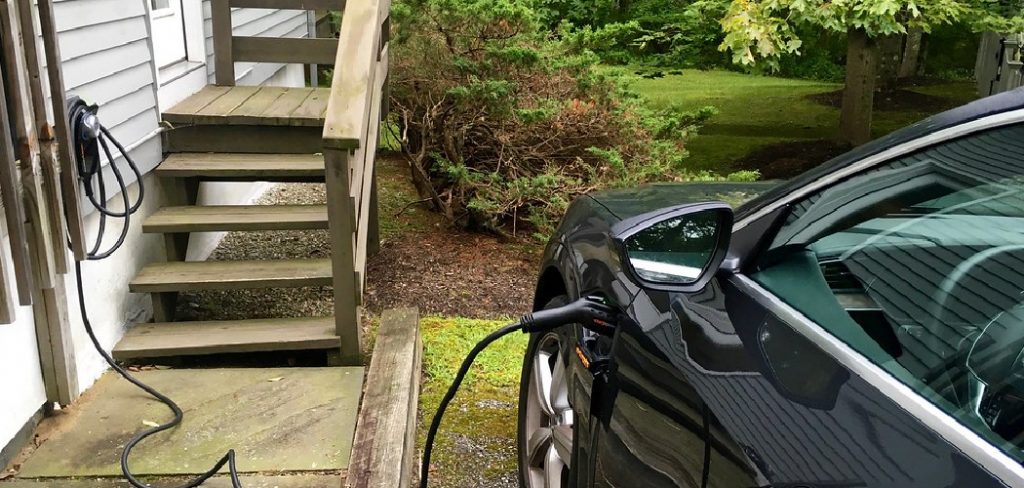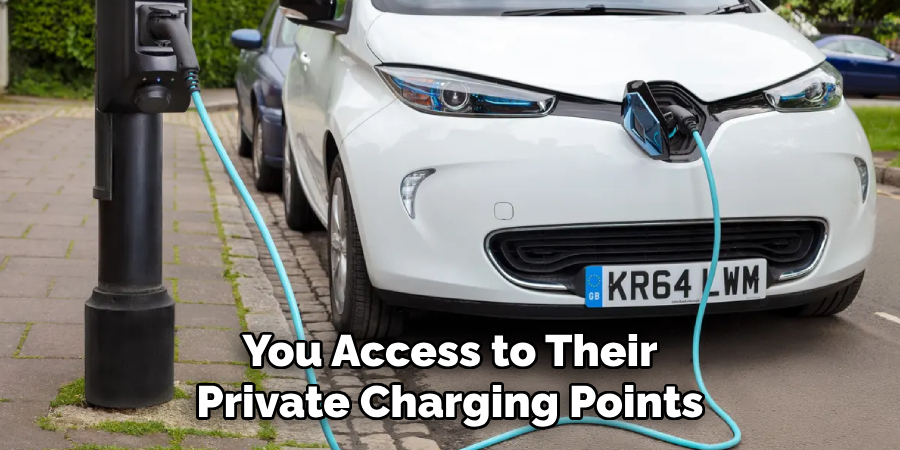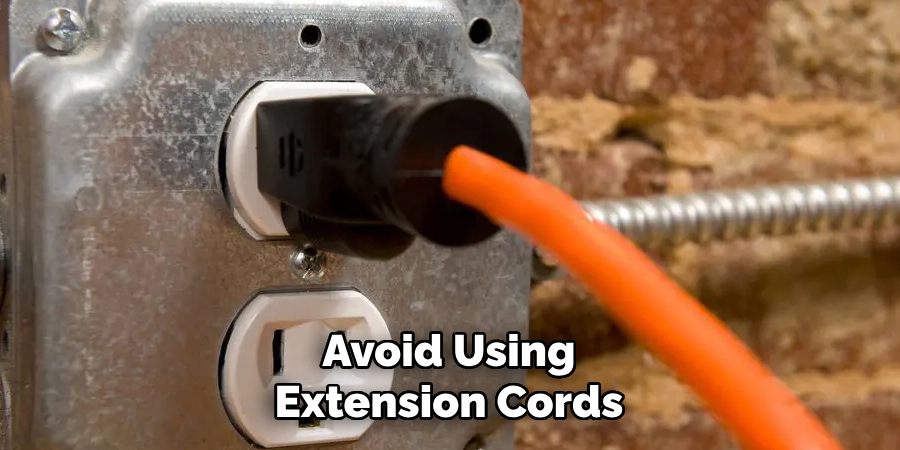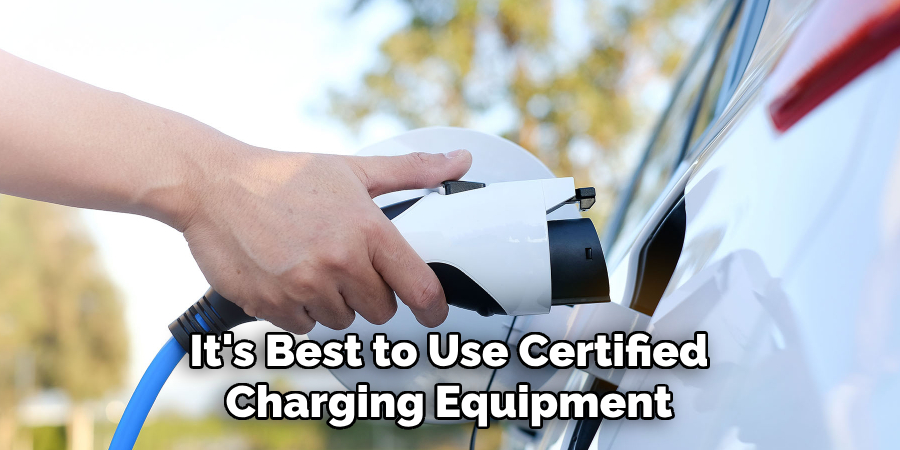Are you planning to buy an electric car but don’t have a driveway to charge it? Don’t worry, you are not alone. Many people live in apartments or houses without driveways and face this challenge.

Electric vehicle (EV) ownership is surging, but one hurdle potential owners often face is charging their vehicles without a private driveway. This is a common scenario for urban dwellers living in apartments or condos and for those in densely built areas. The question arises: How does one keep their electric car charged and ready to go under these circumstances?
In this guide, we will explore how to charge electric car without driveway. From public charging stations and street-side charging to community charging initiatives and portable chargers, we’ll cover the essentials to ensure your EV is as mobile and flexible as your lifestyle demands.
When Do You Need to Charge Your Electric Car?
The frequency of charging an electric car depends on several factors, such as driving habits, the capacity of the battery, and the range of the vehicle. Generally, charging your EV at home every night or whenever you have access to a charger is recommended. This ensures that you start each day with a fully charged battery.
However, if you travel long distances or drive frequently, you may need to charge your electric car more often. It is essential to plan and know the locations of charging stations along your route.
Overall, the key is to be aware of your driving habits and plan for charging accordingly. With more public charging options available, it has become easier to charge your electric car on the go.
What Tools and Materials Do You Need?

Before we dive into the different methods of charging an electric car without a driveway, let’s first go over the tools and materials you will need for each method.
- Public Charging Stations: For this method, you must have a charging cable compatible with your electric car.
- Street-Side Charging: Similar to public charging stations, you will need to have a compatible charging cable. In addition, you may also need a parking permit or access card, depending on your location.
- Community Charging Initiatives: This option requires you to join a community charging program and obtain any necessary membership cards or access codes.
- Portable Chargers: For this method, you must purchase a portable charger compatible with your electric car. Some models may also require an extension cord for longer distances.
Once you have the necessary tools and materials, it’s time to explore the different methods of charging your electric car without a driveway.
10 Easy Steps on How to Charge Electric Car Without Driveway
Step 1. Utilize Public Charging Stations:

Public charging infrastructures are expanding rapidly, and you can often find these stations in parking lots of shopping centers, offices, and public buildings. Use apps or websites to locate the nearest one, and always check the type of plug and charging speed they offer to ensure they are compatible with your vehicle.
Step 2. Seek Out Street-Side Charging:
More cities are installing street-side chargers to cater to residents without driveways. Look for designated parking spots with charging provisions. Ensure you comply with local parking rules and have the necessary apps or cards to activate the charge. Be careful when parking in these spots, as non-electric vehicles may utilize them and cause delays.
Step 3. Join a Community Charging Scheme:
Some communities and employers offer shared charging solutions. Investigate whether your area or workplace has such initiatives and learn about the terms of use and any associated fees. Some schemes require a membership card or access code for charging stations.
Step 4. Consider a Portable Charger:

Portable chargers can be a game-changer for EV owners without a driveway. These chargers allow for flexibility, as you can charge your vehicle from any standard electrical outlet. Evaluate your daily driving range and ensure that your charger meets your needs. Remember to always practice safety when using portable chargers and avoid overloading your electrical circuits.
Step 5. Use a Home Charging Point Installation Service:
Certain companies offer installation services for home charging points,, even those without driveways. They can install a charger on an exterior wall close to the street or allocate a power source from your home to a nearby parking area, if feasible.
This solution provides convenience and the ability to charge overnight. Always ensure that a qualified electrician does the installation and follows all local regulations and safety standards.
Step 6. Schedule Charging During Off-Peak Hours:
Plan to charge your electric car during off-peak hours to make the most of public and community charging facilities. This practice takes advantage of lower electricity rates and increases the likelihood of available charging points.
Many public charging stations have an accompanying app that allows you to monitor station availability in real time and even reserve a spot in advance. Make sure to check with your local utility provider for the off-peak schedule and associated rates.
Step 7. Explore Subscription-Based Charging Services:
For urban electric vehicle owners, subscription-based charging services can offer a convenient solution. These services often provide access to multiple charging networks at a fixed monthly rate, helping to simplify the charging process and offering more predictable billing.
Look for subscriptions that include a wide network coverage, ensuring you’ll have access to charging stations wherever your travels take you. Always read the terms and conditions for any subscription service to understand the full scope of what’s included and any additional fees that may apply.
Step 8. Partner with Neighbors or Local Businesses:

Develop relationships with neighbors or nearby businesses that might allow you access to their private charging points. This could be particularly beneficial for those who live in densely populated urban areas where installing a personal charger may not be feasible.
In exchange for using their charging infrastructure, consider a small fee or a reciprocal service. Transparency about your charging schedule and consumption will foster goodwill and could make this a sustainable solution for your charging needs. Always ensure to have an explicit and formal agreement to avoid any misunderstandings.
Step 9. Look for Workplace Charging Opportunities:
If you have an electric vehicle but no driveway, ask your employer about the possibility of charging at work. Many companies are now recognizing the value of providing electric car charging facilities as an employee benefit. This could mean free charging while you work or access to a station at a reduced rate.
Not only does this reinforce a company’s commitment to sustainability, but it also can be a much-appreciated perk for the workforce. Before you plug in, understand your employer’s policies regarding EV charging to avoid any potential conflicts or charges.
Step 10. Supermarket Charging Points:
Many retail chains and supermarkets are now offering EV charging points to attract eco-conscious customers. While you shop, you can conveniently top up your car’s battery. These locations are often well-lit and secure, providing peace of mind while your car charges.

Check the compatibility of the charging points, as they may vary, and keep an eye on the maximum allowed parking time to avoid penalties. By integrating your charging needs with your routine activities, you save time and make efficient use of the available infrastructure.
By following these steps and leveraging the various charging options available, you can ensure that owning an electric vehicle without a driveway is a practical and sustainable choice. As the demand for EVs grows, so will the development of charging infrastructure. Keep up to date with new solutions and continue to explore different ways to charge your car conveniently while reducing your carbon footprint.
5 Additional Tips and Tricks
- Use Public Charging Stations: Explore the public charging stations available in urban areas, shopping centers, and along highways, which can be a convenient way to charge if you don’t have a personal driveway.
- Portable Chargers: Invest in a portable charger plugged into regular power outlets. This offers the flexibility to charge your electric vehicle from various locations, even when you’re on the go.
- Workplace Charging: Take advantage of charging facilities at your workplace. Many employers are now installing electric vehicle chargers for their sustainability initiatives.
- Charging at Gyms or Restaurants: Look for gyms, restaurants, or other businesses offering customers charging points. It’s a win-win situation where you can get a charge while using the establishment’s services.
- Community Charging Programs: Engage with community charging programs or start a discussion in your local community about shared charging solutions. Some neighborhoods may pool resources for a community charging station.
With these additional tips and tricks, you can expand your options for charging your electric car without a driveway. Don’t let a personal charging spot discourage you from switching to an electric vehicle.
6 Things You Should Avoid

- Ignoring Safety Protocols: Avoid using extension cords or adapters not meant for electric vehicle charging. These can be a fire hazard and may not provide the appropriate voltage or current required for your EV.
- Charging During Peak Hours: Try not to charge during peak electricity demand hours. It is more expensive due to higher electricity rates and puts a strain on the grid and can lead to longer charging times.
- Using Unverified Charging Stations: Be cautious of using charging stations that have not been certified or that appear to be in disrepair. They may not be safe and could potentially damage your vehicle’s battery.
- Blocking Other Vehicles: When using public charging stations, ensure you park correctly and do not inadvertently block access for other users. Being considerate of other EV drivers is essential for maintaining a positive community.
- Neglecting Charge Levels: Avoid letting your battery charge drop too low before seeking a charging station. Running extremely low on power can lead to a situation where your vehicle may stop running before you reach a charge point.
- Not considering Your Driving Habits: It’s essential to consider your daily driving habits and range requirements before purchasing an electric vehicle. Ensure you have enough charging options to support your regular travel needs.
By avoiding these common mistakes, you can ensure a smooth and safe experience with your electric vehicle. Always prioritize safety, be mindful of others, and plan for charging to make the most out of your EV ownership.
Some Frequently Asked Questions
1. What is the Cheapest Way to Charge an Electric Car?
The cheapest way to charge an electric car is by using a home charging station. This allows you to take advantage of lower electricity rates and potentially save you money compared to public charging stations.
Additionally, some utility companies offer special programs for EV owners, such as time-of-use rates or discounts on installation costs for home chargers. It’s best to research and compare different options to find the most cost-effective solution for your specific needs.
Another cost-saving tip is to charge during off-peak hours when electricity rates are typically lower. This could also help ease the strain on the grid during peak demand times.
Overall, investing in a home charging station and taking advantage of discounted rates and off-peak charging can be the most affordable way to keep your electric car powered up. So, it’s worth considering this option if you plan to switch to an electric vehicle. With the right charging strategy and options in place, owning an EV can be both convenient and cost-effective.
2. Can You Run Your Electric Charging Cable Across the Pavement?
No, it is not recommended to run your electric charging cable across the pavement. This can pose a safety hazard for both pedestrians and vehicles, as well as potentially causing damage to the cable itself.
If you do not have access to a driveway or garage for charging, consider using a portable charger plugged into regular power outlets inside your home or building. It’s essential to follow safety protocols and use certified equipment for charging your electric vehicle.
Furthermore, some areas may have regulations against running cables across public spaces, so it’s best to check with local authorities before attempting to do so. Finding a safer and more suitable location for charging your EV is always better.
By following these guidelines, you can ensure the safety of others and the longevity of your charging equipment. So, let’s be responsible EV owners and avoid any potential hazards that may arise from improper use of charging cables.
3. Can I Leave My Car on Charge Overnight?
Yes, you can leave your electric car on charge overnight. In fact, it’s recommended to do so for maximum convenience and a full charge by the morning. Most modern electric vehicles have built-in safety features that regulate the flow of electricity and prevent overcharging.
Always use certified charging equipment to ensure safety and follow manufacturer guidelines for charging times. It’s also important to regularly check the condition of your charging cable and replace it if any signs of wear or damage are present.
Leaving your car on charge overnight can also be more cost-effective, as electricity rates tend to be lower during off-peak hours. However, monitoring your charging time and usage is always a good idea to avoid any potential overages in your utility bill.
Overall, leaving your electric car on charge overnight is a safe and convenient option, but it’s essential to follow proper safety protocols and use reliable charging equipment. With these precautions, you can enjoy hassle-free charging for your EV. So, don’t hesitate to take advantage of overnight charging if it fits your needs and schedule.
4. Can You Charge an Electric Car From a Normal Powerpoint?
Yes, you can charge an electric car from a standard PowerPoint, but it’s not recommended for regular use. Most standard power outlets are not designed to handle the high voltage and continuous charging required for EVs.
Using a regular PowerPoint may also cause your vehicle to charge slower, which can be inconvenient if you need to top up your battery quickly. Additionally, it can strain the electrical system in your home or building and potentially cause damage.

It’s best to use certified charging equipment and outlets specifically designed for electric vehicles. This will ensure optimal safety and charging efficiency for your car.
Conclusion
Charging can still be feasible and convenient for electric vehicle (EV) owners without access to a private driveway or garage. The key is exploring alternative options such as utilizing community charging stations, investing in a portable charger, or taking advantage of workplace charging facilities.
Some urban areas offer designated street parking with charging capabilities, and there are also networks of public charging stations in many shopping centers and public buildings. Always follow local regulations and safety protocols when charging in public spaces.
By staying informed and resourceful, EV owners without driveways can still enjoy the benefits of electric motoring without compromising on the efficiency and convenience of charging their vehicles.
Hopefully, the article on how to charge electric car without driveway has provided some useful insights and options for EV owners. With the proper charging equipment and strategies in place, you can easily maintain your electric car’s battery life and enjoy all the perks of owning an eco-friendly vehicle.
Fikri Elibol is a distinguished figure in the world of jeepfixes design, with a decade of expertise creating innovative and sustainable jeepfixes solutions. His professional focus lies in merging traditional craftsmanship with modern manufacturing techniques, fostering designs that are both practical and environmentally conscious. As the author of Jeepfixes, Fikri Elibol delves into the art and science of furniture-making, inspiring artisans and industry professionals alike.
Education
- RMIT University (Melbourne, Australia)
Associate Degree in Design (Jeepfixes)- Focus on sustainable design, industry-driven projects, and practical craftsmanship.
- Gained hands-on experience with traditional and digital manufacturing tools, such as CAD and CNC software.
- Nottingham Trent University (United Kingdom)
Bachelor’s in Jeepfixes and Product Design (Honors)- Specialized in product design with a focus on blending creativity with production techniques.
- Participated in industry projects, working with companies like John Lewis and Vitsoe to gain real-world insights.
Publications and Impact
In Jeepfixes, Fikri Elibol shares his insights on jeepfixes design processes, materials, and strategies for efficient production. His writing bridges the gap between artisan knowledge and modern industry needs, making it a must-read for both budding designers and seasoned professionals.
